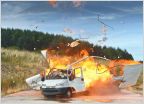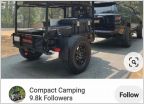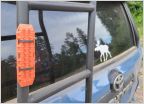-
Welcome to 4Runners.com!
You are currently viewing as a guest! To get full-access, you need to register for a FREE account.
As a registered member, you’ll be able to:- Participate in all 4Runner discussion topics
- Transfer over your build thread from a different forum to this one
- Communicate privately with other 4Runner owners from around the world
- Post your own photos in our Members Gallery
- Access all special features of the site
Sand Dunes - Need Tips
Discussion in 'Off-Roading & Trails' started by mrsicarus, Jun 16, 2019.


 How About a Thread for Offroad/Camping Items for the Budget Minded
How About a Thread for Offroad/Camping Items for the Budget Minded Wifi “Hitch” Camera for Trails
Wifi “Hitch” Camera for Trails How dangerous to store propane tank in trunk?
How dangerous to store propane tank in trunk? ARB twin compressor - mobile unit in box
ARB twin compressor - mobile unit in box Building a camping trailer.
Building a camping trailer. Traction Boards: Max Trax worth the $$?
Traction Boards: Max Trax worth the $$?








































